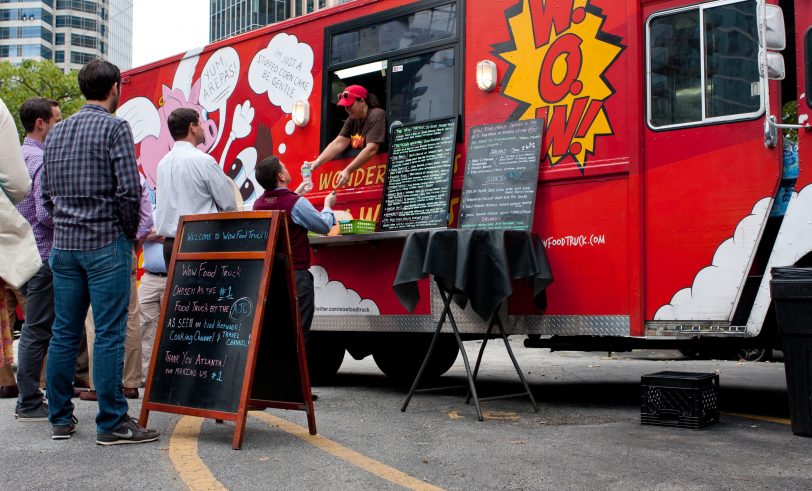Food from a truck just tastes better, right? Grabbing a treat and enjoying the weather can make for a great day. It’s too bad that St. Louis food trucks continue to be bogged down with operating restrictions.
Several years ago, Show-Me Institute’s Patrick Ishmael discussed the overregulation of food trucks, with emphasis on the then-new food truck map that outlines the numerous no-park zones for food trucks within the Downtown Vending District. So, years later, have we seen food trucks gain substantial freedoms in the market?
Unfortunately, and perhaps unsurprisingly, no.
The map mentioned above is still in effect and places a large barrier between food trucks and success in the market. As the map shows, food trucks cannot set up within 200 feet of a restaurant or in the stadium or conference center areas. Though this map may be a little outdated in terms of restaurant placement, the rules are still in place and still very restrictive. These regulations make large parts of the “vending district” off-limits to food trucks. According to the city’s vending rules and regulations, trucks must stop serving by 11 p.m., cutting off access to late-night crowds after a concert or hockey game.
St. Louis ranked 12th out of 20 cities in the U.S. Chamber of Commerce Foundation’s report on regulatory burdens for opening and operating food trucks in 2017. Much of this low ranking is attributed to what Ishmael pointed to years ago: operational limitations.
Food trucks are still bogged down with regulatory restrictions that make it much harder to succeed. If we want more success stories like Balkan Treat Box, the popular food truck that grew into an award-winning brick-and-mortar hotspot, we need to give food trucks the freedom to meet our ever-increasing demand for delicious, on-the-go food.



